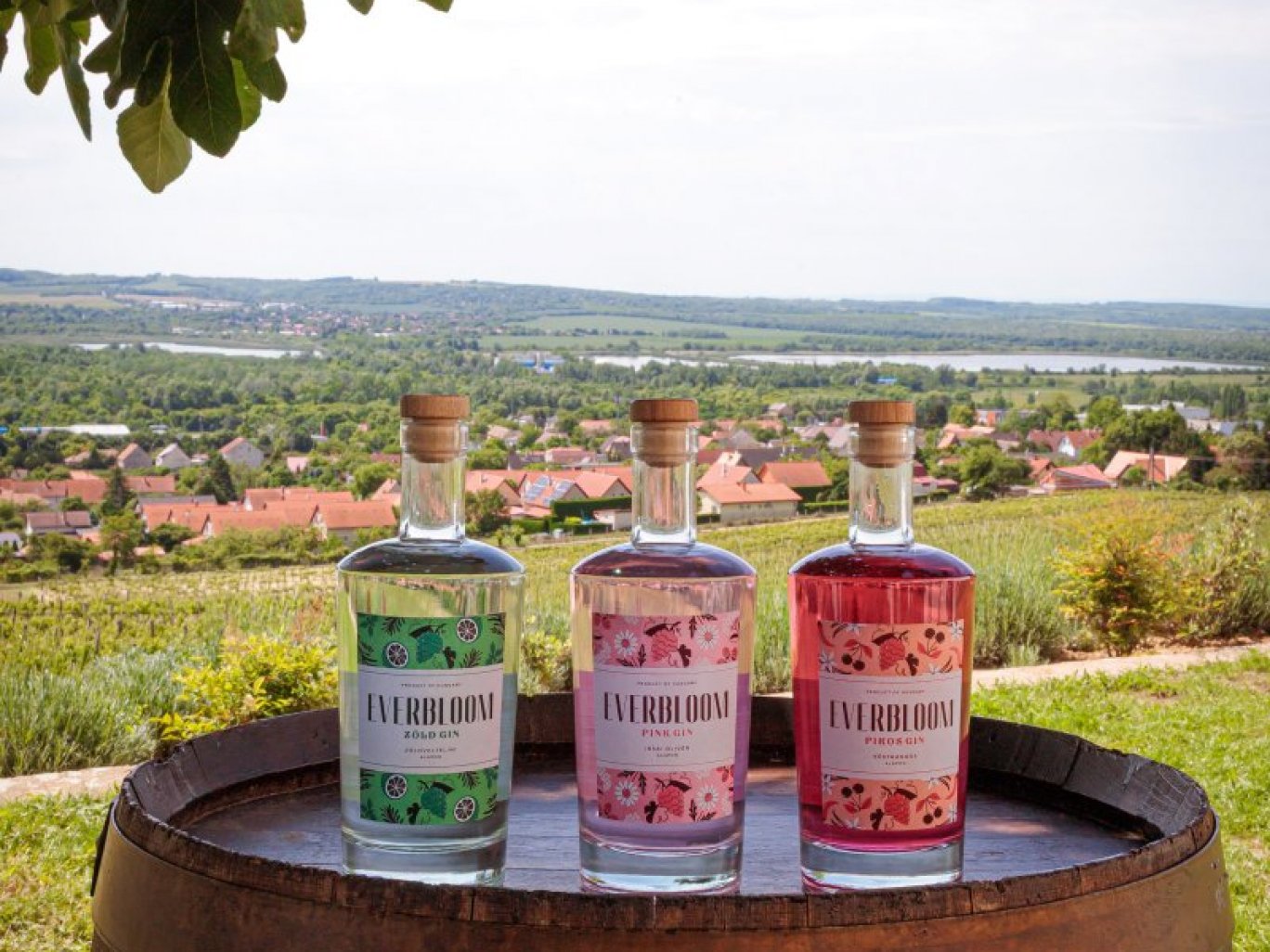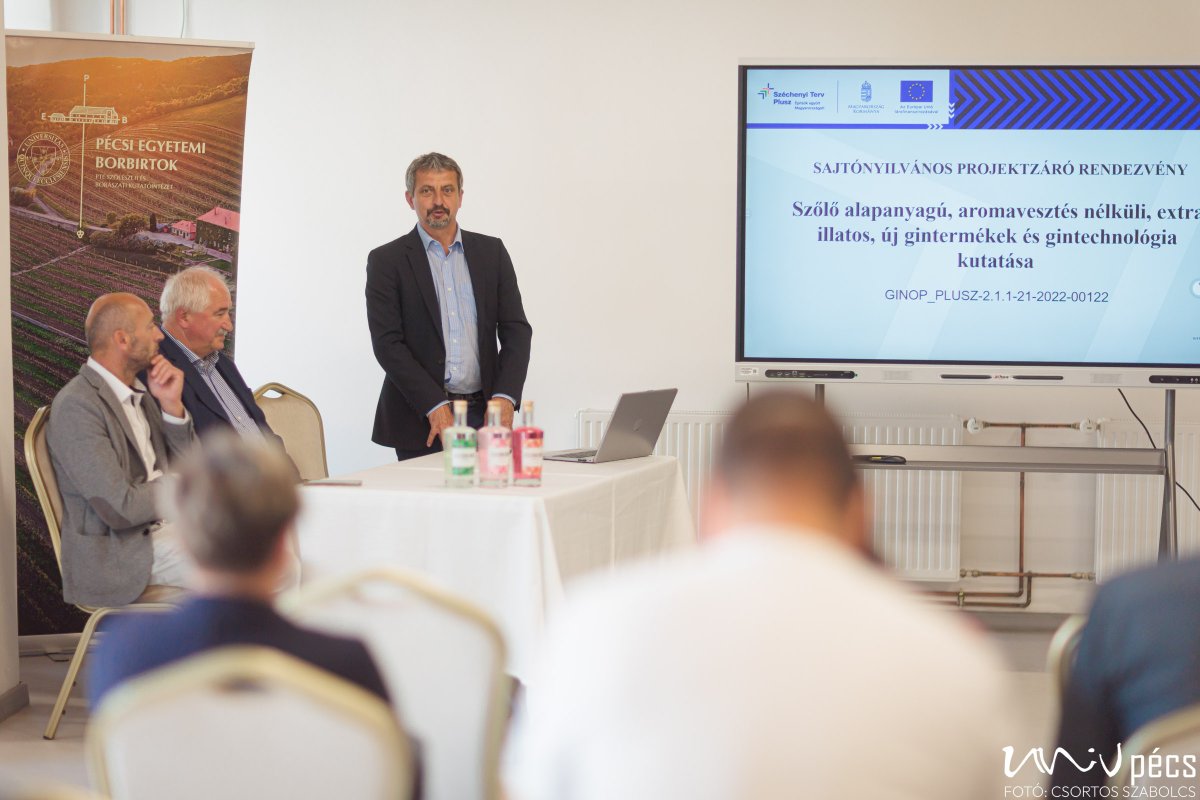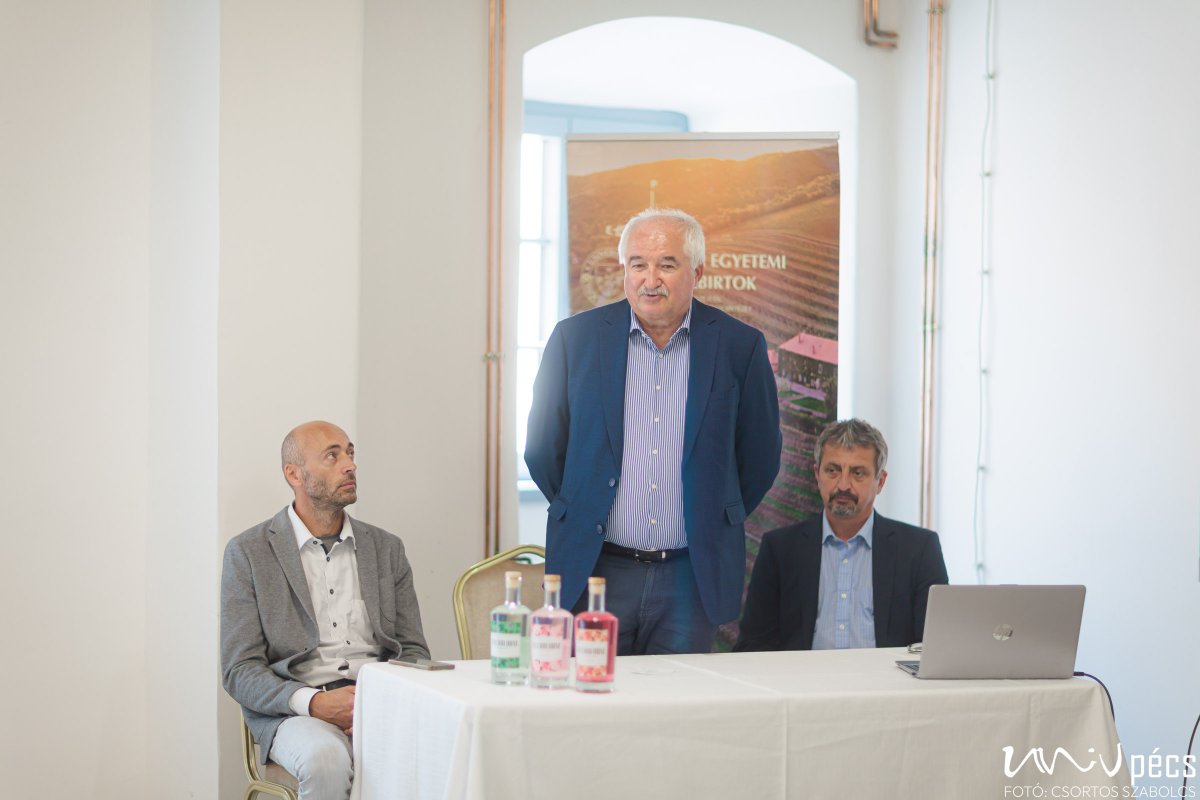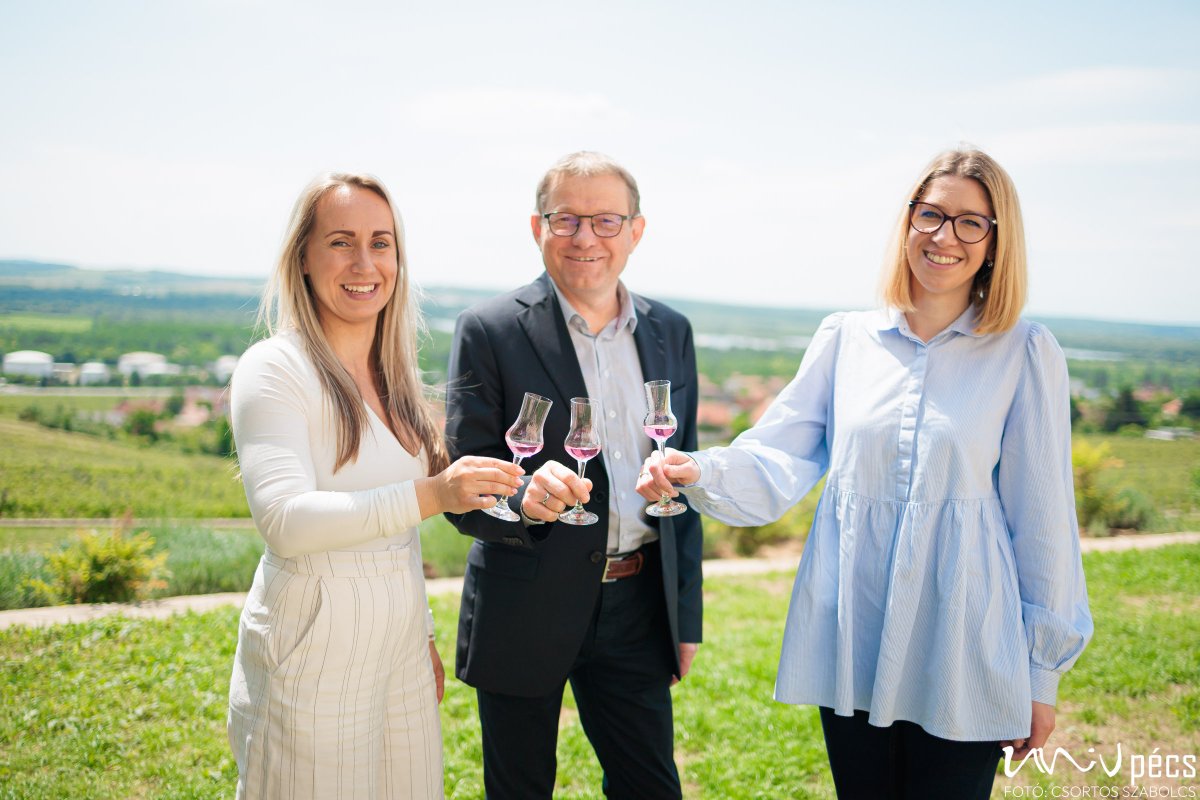Grape-based gin!? PTE can make it!
2025
May
22

Using innovative technologies for grape processing, Hungarian experts were the first in Hungary to develop three grape-based gin products with a unique character, which reached marketable quality by the end of the project. Danubiana Ltd. and the University of Pécs (PTE) implemented the project “Research of new grape-based, aroma-free, extra-fragrant, new gin products and gin technology” in a consortium. The project aims to promote new uses for grapes in Hungary, instead of leaving the existing high-value Hungarian grape resources fallow due to declining wine consumption. The project has received a total of HUF 429.80 million in non-reimbursable funding from the European Regional Development Fund and the national central budget under the Economic Development Operational Programme Plus.

As a result of the project, the alternative use of large quantities of grapes can help to solve the problem of unsold wine, which has been increasing in recent years: grapes have been used to produce new extra-fragrant gin products, a technology that has been researched and developed in the framework of this project.
Péter Teszlák, Research Director of the Research Institute of Viticulture and Enology (SZBKI) of the University of Pécs, said at the project's closing event on Tuesday: “This was a very special project, as it is a separate discipline, from harvesting to processing and distillation.”

István Ipacs-Szabó, Chief Winemaker of the PTE Research Institute of Viticulture and Enology, added: "We investigated the application of several innovative technologies, and finally we developed a complex technological line, one of the main elements of which was pH reduction. In parallel with the definition of the optimal wine and spirit making technology, we also investigated the possible gin spices to be considered, the use of other parts of the grape such as flowers, leaves, berries and seeds as spices, which has not been done in previous national and international practice and literature."

It was noted that the experts had carried out extensive research to identify the flavours and potential of different innovative and traditional grape varieties. The research and professional background of the project was provided by the large-scale winemaking experience of Danubiana Ltd., the multiple award-winning Brill Brandy House as a service provider, the accredited laboratory of the PTE Research Institute of Viticulture and Enology and the institute's 70-year-old viticultural and oenological knowledge base. To achieve this goal, a series of comprehensive laboratory tests and in-plant trials were carried out, comparing traditional grape varieties and new, innovative grape varieties from the PTE SZBKI's resistance improvement programme as a gin base material.

From left Péter Teszlák, Győző Schmidt and István Ipacs-Szabó
Győző Schmidt, Managing Director of the consortium partner Danubiana Ltd., said about the history of gin: "Already in ancient times, juniper was used to produce spirits, and in the Middle Ages, the Dutch made this form of alcohol really popular. In those days, however, juniper was used to improve the alcoholic beverages that were undrinkable, of poor quality and therefore unsaleable. We didn't want to go down that route, of course, but tried to produce a quality product. I think, and I hope that the market will see it that way, that we have succeeded!"
Making gin in a tub? Yes, it has happened... Well, not in this project!
At the event, Győző Schmidt interestingly told us that during Prohibition in the United States, gin was produced in the bathtub in households, so it's a really special kind of alcohol with a special forest and a special history.

Of course you could also taste the brand new drinks at the closing event
Returning to the present and the special project, the result is three gins with unique character, commercially marketable quality and the gin technology to produce them. These products are “green gin”, “pink gin” and “red gin”. When asked, we were told that the new special alcoholic beverages are scheduled to be launched this year.
Translated by Mercédesz Kovács-Csincsák
- Log in to post comments
University of Pécs | Chancellery | IT Directorate | Portal group - 2020.



















